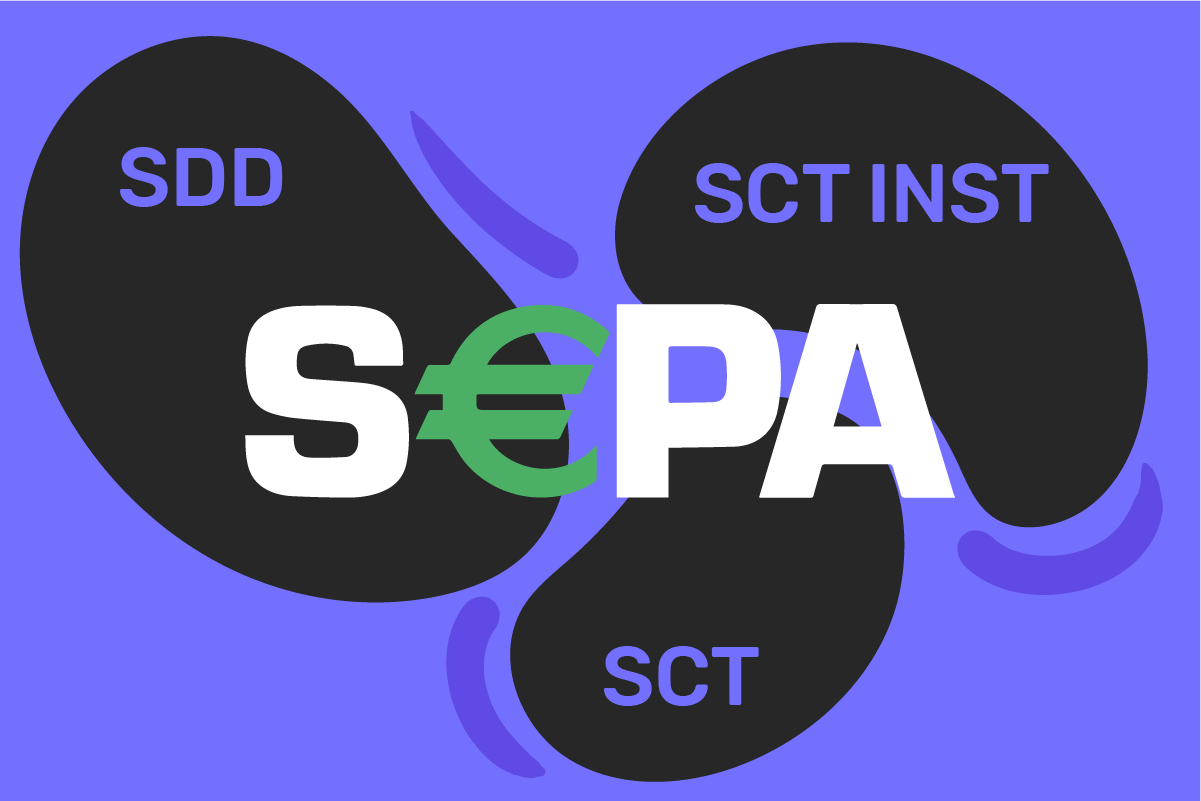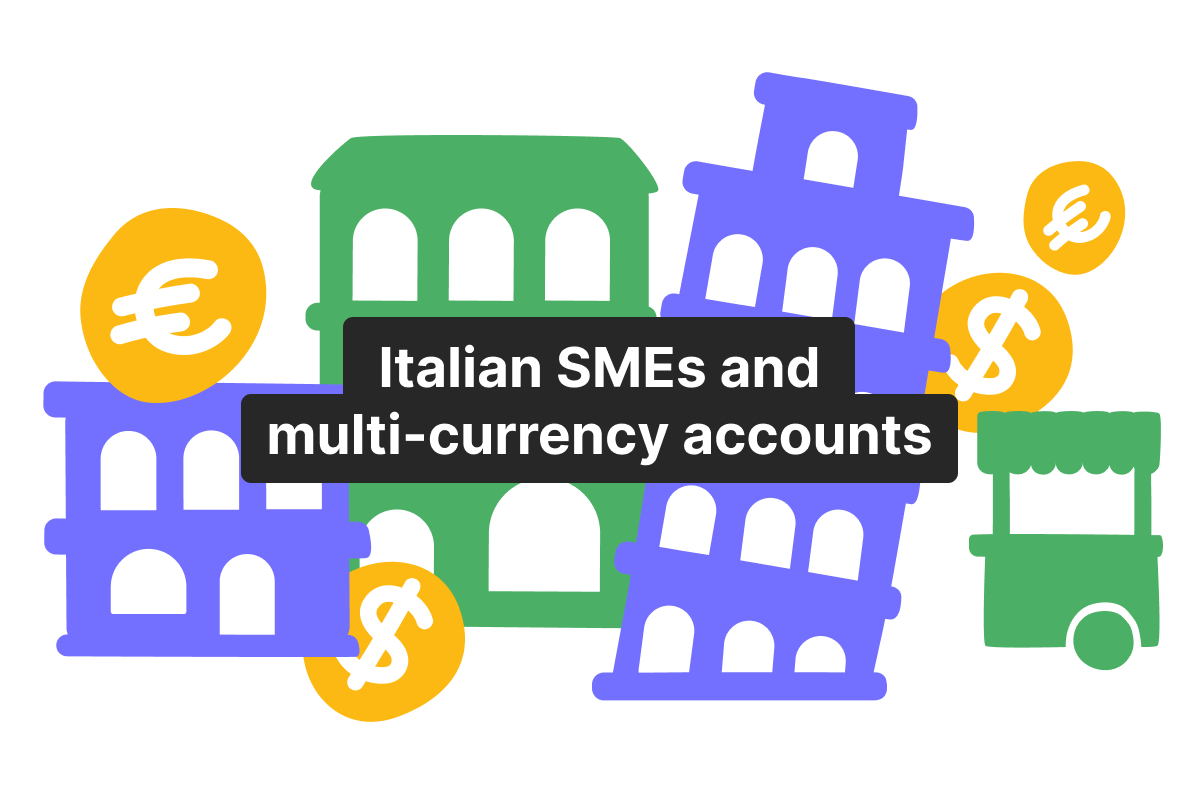If you live in Europe, the chances of making SEPA bank transfers are pretty high. But did you know there are different types of SEPA payments? No worries, Genome’s team is here to clarify the difference between them. But before getting to the article’s main topic, here’s a quick reminder.
SEPA transfers are transactions made in euros, which occur within the SEPA zone on a bank-to-bank basis. Currently, 36 countries are a part of the Single Euro Payments Area (SEPA). All the EU members and 9 other countries are a part of the SEPA network.
To transfer funds, you’ll require the receiver’s full name, IBAN, and a BIC number (not always). Now that we’ve explained the main things to know about the topic discussed let’s find out what the types of SEPA payments are.
Main types of SEPA payments
The Single Euro Payments Area (SEPA) has three main types of payments, each serving a different purpose.
SEPA Credit Transfer – the first one of its kind, a one-time transfer of funds between bank accounts in the SEPA zone, typically used for business payments, salaries, and personal transactions. Payment service providers in the EU commonly provide such bank transfers, even in Vatican City.
SEPA Direct Debit – This is an automated payment method that allows a company to receive euro payments from customers’ accounts to their business bank account with prior authorization. It is handy for companies with subscription-based models, utility bills, or regular business-to-business transactions.
SEPA Instant Credit Transfer – A real-time payment solution that enables euro transfers within seconds and works 24/7 across SEPA-participating banks. To this day, it might just be the best cross-border euro payment system in the European Union, but it has its own drawbacks.
Each of these payment types differs in terms of processing speed, use cases, and authorization requirements. Some of them are good for domestic payments (for example, within France), others for cross-border transactions between European countries (for example, from France to San Marino). Let’s go through them all in detail.
SEPA Credit Transfer
It is where it all started. The SEPA Credit Transfers (SCT) was established in 2008. It was the first kind of scheme aimed at substituting and perfecting domestic transfers for European countries.
The European Union aimed to make the SEPA Credit Transfers faster and cheaper (or at least the same price) than the domestic ones. And, as we know now, the initiative was a success.
As you might have guessed, the SCTs are just a money transfer between the two bank accounts. Just go on and use your bank’s mobile app or a web browser version, or go to the branch directly and order an SCT to the recipient’s account. Don’t forget to find out the beneficiary’s international bank account number (IBAN) and SWIFT code.
The transfers are carried out in euros and usually take one working day to arrive in the beneficiaries’ bank accounts. Please note that the payment completion times can be longer due to the time of day you made them and if any celebrations/bank holidays take place.
Open an account
in Genome online
SEPA Instant Credit Transfer
Let’s uncover what a SEPA Instant Credit Transfer (SCT Inst) is. This scheme is relatively new, as it was implemented in 2017, but it became a welcoming addition to the SEPA scheme family nonetheless.
The main advantage of the SEPA Instant Credit Transfers is that they are carried out instantly – just within 10 seconds or even less on any day of the week! Remember that basic SCTs take at least one business day to complete and can take longer due to weekends/holidays, so SCT Inst is a huge improvement.
Unfortunately, there are a couple of limitations to this instant payment option. Not all countries and banks within the SEPA zone have implemented the SCT Inst scheme. Overall, there are 2733 SCT Inst scheme participants, compared to 3532 SCT scheme participants as of February 2025. By the way, Genome is a part of the SEPA Instant Transfers scheme, enabling instant payments to all our clients.
Another crucial factor to consider is that the SEPA Instant Credit Transfers usually have limits on the amount of money you can send to other bank accounts compared to SEPA SCT.
SEPA Direct Debit
A year after the SCT scheme establishment passed, another payment scheme came into being. We are talking, of course, about SEPA Direct Debit, or SDD for short.
So, what’s the difference between SCT and SDD? Generally, direct debit is a type of payment that is pre-authorized: rather than initiating it yourself, you allow a third party to withdraw funds from your account. Before any transactions can occur, you and the debtor (the third party) need to sign the direct debit mandate, which contains the terms of such payments. SEPA DD works the same way, but the payments are in euros and occur within the SEPA zone.
Where SCTs are used for singular payments, SDDs are more common when it comes to recurring transfers. With it, you can pay your monthly electric bills or buy a subscription to your favorite streaming service, etc! Companies can also improve their cash flow management, as they will have a better picture of incoming payments.
SEPA Core Direct Debit (SDD Core) and B2B Direct Debit (SDD B2B) are the two types of SEPA Direct Debit payments. Here’s how they differ:
Both personal users and companies can take part in the SDD Core, while the SDD B2B only occurs between the enterprises;
In the case of SEPA Direct Debit Core, the bank’s/PSP’s involvement is mandatory. With the SDD B2B – it’s optional;
The payer can request a refund 8 weeks after the due date of the SDD Core. There are no refunds when it comes to SDD B2B.
By the way, Genome has a separate article on what a SEPA Direct Debit is, its benefits, and how to make direct debit payments.
Choosing the right SEPA payment option
Selecting the appropriate SEPA payment schemes depends on various factors like transaction urgency, speed, frequency, and cost considerations. To pick the option that suits you best, check the comparison table below.
Transfer type | SEPA Credit Transfer | SEPA Instant Transfer | SEPA Direct Debit |
Speed | 4 hours to 1 business day | Within 10 seconds (24/7) | Depends on the mandate (usually 1-3 business days) |
Use cases | One-time payments (e.g., invoices, salaries) | Urgent payments (e.g., e-commerce, B2B settlements) | Recurring payments (e.g., subscriptions, utilities) |
Authorization | Manual initiation by a sender | Manual initiation by a sender | Pre-authorization by a payer |
Reversibility | Can be recalled before settlement | Generally irreversible | Refundable within 8 weeks (or 13 months for unauthorized debits) |
Availability | During business hours | 24/7 | During business hours |
SEPA transfer limits | €999,999,999.99 | €100,000 at a time | No limits |
The fee for using different transfer types can vary between payment service providers and bank accounts, but generally, SEPA transfers are cheaper than international transfer options like SWIFT.
So, the best option for transferring funds will be based on your intent:
SEPA Instant if speed is the priority.
SEPA Credit Transfer, if you need a simple but cost-effective way to send money.
SEPA Direct Debit is the most efficient solution if your goal is an automated recurring payment or loan repayment.
Key benefits of SEPA payments
A unified euro payments system. SEPA eliminates the complexity of cross-border payments within Europe, as it makes euro transfers as simple as domestic ones. This fosters greater financial integration and removes barriers for businesses and consumers.
Quick domestic and cross-border transactions. Germany, France, Poland, Greece, and even Vatican City and San Marino are easily accessible because the SEPA network provides efficient processing across EU member banks and financial institutions.
Lower fees. Traditional international transfers involve higher costs, and alternatives like SWIFT are even more costly, but SEPA significantly lowers transaction fees. What is the secret? SEPA network is designed specifically for euro transfers, operating under a standardized framework, plus it lacks currency conversion fees.
Consistent regulations and security. The SEPA system follows regulatory standards, ensuring uniformity across all member countries in accordance with the rules set by the European Central Bank, along with the European Commission and national central banks.
How Genome supports your SEPA payments
If you are looking for financial institutions that can help you benefit from the SEPA scheme, why not try Genome?
Our platform offers both SEPA Credit and Instant Transfer options, enabling you to easily send SEPA payments in euros; no bank identifier code is required.
In addition, our business wallet institutions can get access to international payments like SWIFT and other transfer options if they’re eligible.
To add to your superb payment experience, we offer virtual and physical Visa debit cards for on-the-go, online, and contactless payments. All cards can be linked to your multi-currency accounts in EUR, USD, GBP, PLN, CHF, CZK, HUF, or SEK.
Our team is here to make your financial experience quick and seamless, be it through a web portal or a Genome app.
Open an account
in Genome online
Key takeaways
SEPA payments provide a fast and cost-effective way to transfer euros within the Eu and beyond (to some members of the European Free Trade Association, for instance). Understanding the different SEPA payment methods can help you choose the right one for yourself. Once again:
SEPA Credit Transfer is good for standard, non-urgent payments.
SEPA Instant Credit Transfer enables real-time payments within seconds, precisely for urgent transactions.
SEPA Direct Debit simplifies recurring payments like subscriptions or regular business transactions.
Choosing the right SEPA payments method for cross-border euro transfers depends on factors like transaction speed, frequency, and cost. Make sure that you read through their characteristics carefully, as well as ensure that your EU member state has all SEPA options available when making a decision.
FAQs
Can I use SEPA for transfers in currencies other than euros?
No, the Single Euro Payments Area only supports euro payments by design. If you need to send money in other currencies, you must use SWIFT or another international transfer method.
What if my bank is not SEPA-compliant?
Unfortunately, you won’t be able to send or receive SEPA payments. You may need to use an alternative bank or payment provider that offers SEPA services. For instance, Genome allows all our clients to send and receive both SEPA Instant and Credit Transfers.
Do I need a special IBAN format for SEPA transfers?
No, SEPA transfers use standard IBAN formats. Your international and domestic transactions in euros will be processed as long as your international bank account number (IBAN) is valid and the recipient’s bank is located in one of the SEPA-participating countries.
Is there a limit on how much I can send via SEPA Instant?
Yes, the standard SEPA Instant limit is €100,000 per transaction, but commercial banks may set lower limits based on their policies.
How do I stop a recurring SEPA Direct Debit mandate?
You can cancel a SEPA Direct Debit by notifying your bank and the company that collects your payments. This should be done before the next scheduled debit.
Is SEPA available in non-EU countries?
Yes, SEPA includes some non-European Union countries like Norway, Switzerland, and the UK. As long as a country is a part of a SEPA zone, euro payments can be made seamlessly.






